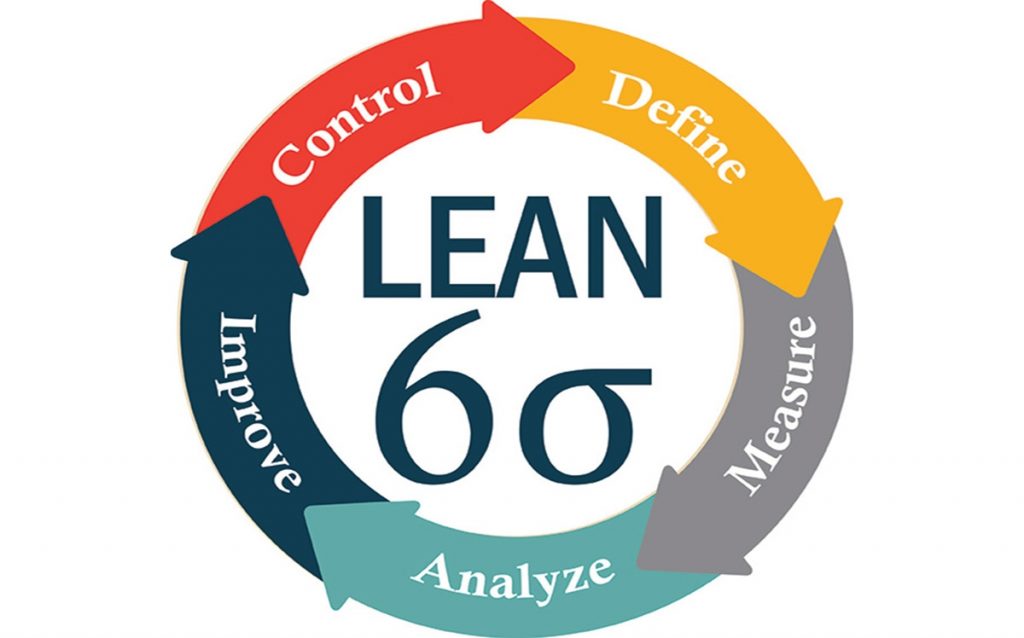Six Sigma vs. Lean: What’s the Controversy? What the Difference?
Many professionals ask “What is Lean?”, some ask “What is Six Sigma?”, and of course still others ask “What is Lean Six Sigma?” As it turns out, Lean and Six Sigma address similar problem spaces but approach them differently. Here is a look at what they are, the difference, the similarities, and the synergies.
The difference between Lean and Six Sigma can be summarized as follows:
Six Sigma = Reduced process variation
Lean = Improved process flow

Let’s take a look at each.
What is “Lean”?
In the practice of “Lean”, the focus is on breaking down processes to the “bare bone essentials”, hence the name “lean”. The Lean approach to waste is that “Non-value added is waste”. Hence, the proactice of Lean has as its central goal to segregate waste from value in processes, and eliminate the waste and non-value added.
The typical method for practicing Lean is to do the following:
- Identify Value
- Define Value Stream
- Determine Flow
- Define Pull
- Improve Process
The focus of Lean is on Process flow. Tools used for the practice of Lean are oriented to visualization, and include tools like Microsoft Visio.
What is Six Sigma?
In the Six Sigma approach, the view on waste is that “Variation is waste”.
The DMAIC method is used in practicing Six Sigma:
- Define
- Measure
- Analyze
- Improve
- Control
Six Sigma is a Problem focused methodology, and the primary toolset of Six Sigma is Math and Statistics.

The Conflict Between Lean and Six Sigma
There is a “battle” within the Lean and Six Sigma professional communities among many who think their respective way is better and superior. In general, the Six Sigma side claims to be technically superior and that reducing variation gets to the root of the problem. The Lean side argues that basic flowcharting is more often than not all that is needed to produce high impact improvements.
This all has a “territorial” feel about it among consultants and aficionados of each approach or methodology. However, we know that tools are only a means to and end, and that we need to match the tool to the job. Such arguments and territorialism often arise when professionals are attached to the tool, and in essence are a “solution in search of a problem”, and want to make sure their solution is chosen more often.
Does the Controversy Matter?
Tough times typically mean LEAN times, and these are tough time economically around the world. It seems that under those conditions, it would be more appropriate to focus on the challenge at hand and use the best tool(s) for the job. In my opinion, the controversy matters little.
Six Sigma and Lean go together hand in hand, although they often are differentiated. Despite any distinctions, the two go very well together and complement one another. For example, it could be a very logical approach to focus on Lean to achieve improved process flow, and at the same time develop a deeper understanding of the process. If more work is needed, Six Sigma could be used to reduce process variation. It seems very logical that they can be effectively deployed together.
Advantages To Online Six Sigma Certification
Most companies pay a very high price to hire in-house Six Sigma training for their staff. For people that have access to subsidized training, on the Online Six Sigma certification is best suited.
By shopping carefully, interested parties can purchase on the web certification programs that are the same as or better than any physical training class. These online programs are often very flexible in nature, permitting workers to fit Six Sigma training into a harried schedule.
Although 100 % Six Sigma certification costs money, Six Sigma training can be readily had on the Web. It doesn’t cost a cent to start learning the basics of lean organization principles. While it can often be difficult to sort out industrial promotions from genuinely educational sites, the Internet consists of many free resources for the budding Six Sigma professional. The world of on the web Six Sigma training is as broad as it’s deep, providing Six Sigma training that is specifically to any industry.
During periods of economic crisis, many professionals reflexively turn to education and certification for security. Even though this is typically a wise move, only a couple of certifications offer real and lasting value in the marketplace. Six Sigma certification has proven marketability across a lot of industries, making it the certification preferred by the conscious modern specialist. As time passes, technology which was once considered exciting becomes normal and pedestrian. In our own time, the online world moved from a world-shaking development to a universally accepted tool. Regrettably, far too many businesspeople only make use of the net for communication and networking, while disregarding the broad world of Web certification and training.
As we weather a time period of change and uncertainty, we know more professionals will take advantage of Internet certification, especially Six Sigma certification. With no capability to adapt and change, staff become attentive to the whims and dictates of the market. Six Sigma certification is the key to stability and independence in any market climate.
